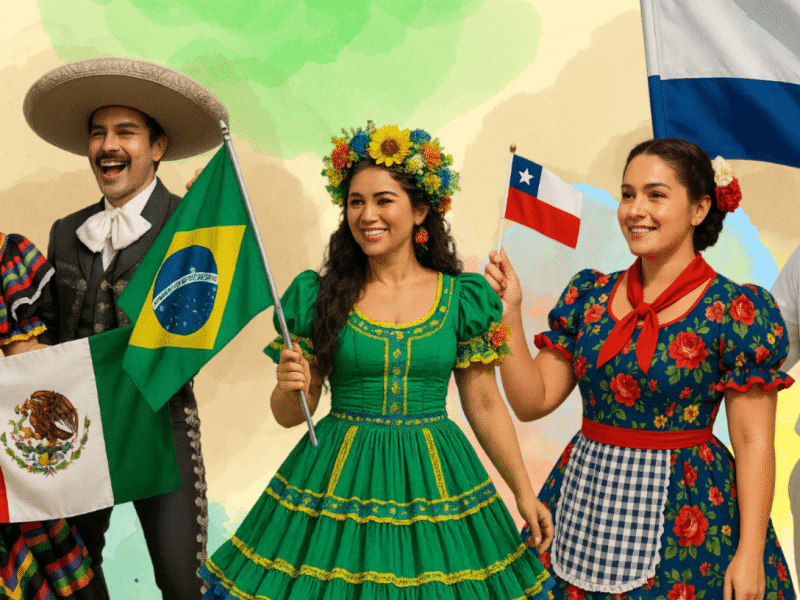The Shadows of Colorism: A Legacy of Colonialism That Still Hurts
Colorism is a word that might not get as much attention as racism, but its impact runs deep, especially within Latino communities.
Colorism is a word that might not get as much attention as racism, but its impact runs deep, especially within Latino communities. It’s the unspoken reality that lighter skin often grants privilege, while darker skin can bring unfair obstacles, even within our own families, workplaces, and social circles. While many might brush off these biases as relics of the past, the truth is, colorism remains woven into the fabric of Latino culture in ways that continue to shape identity, opportunity, and self-worth.
What is Colorism?
At its core, colorism is the preference for lighter skin over darker skin, often within the same racial or ethnic group. Unlike racism, which targets entire racial categories, colorism plays out subtly within communities, favoring those with lighter complexions while pushing those with darker skin to the margins. As Dr. Nayeli Chavez-Dueñas, a professor at the Chicago School of Professional Psychology, explains in an ABC 7 article, “It basically means people that are lighter-skinned are preferred and have more privilege than people that are darker-skinned.”
For Latinos, this phenomenon is nothing new. The roots of colorism trace back to Spanish colonization, when a rigid racial caste system placed Europeans at the top and Indigenous and African peoples at the bottom. Over generations, this social hierarchy has persisted, dictating who’s perceived as beautiful, successful, or even worthy of opportunities.
How Colorism Manifests in Latino Communities
Colorism rears its head within Latino communities in many different ways. For one, lighter-skinned Latinos are often assumed to be more affluent or educated, while darker-skinned Latinos face stereotypes associating them with poverty, crime, or a lack of sophistication.
“Colorism is something you see so much, unfortunately, in the Hispanic community. Oftentimes, it is believed those who are of a lighter complexion are of a higher class than those with a darker complexion,” Karen Villanueva-Sierra, an Afro-Latina from Puerto Rico, shared with ACB 11. This bias has real consequences. A Pew Research Center poll found that 62% of Latinos believe darker skin hurts their chances of getting ahead in the U.S., while 59% say lighter skin helps.
From telenovelas to Hollywood films, lighter-skinned Latinos dominate media representation. While it doesn’t deny the fact that Latinos, no matter their skin color, all face challenges in these industries, Afro-Latinos and Indigenous-looking actors are constantly either excluded or relegated to supporting roles. In Spanish-language media, white Latinos are positioned as the romantic leads, while darker-skinned actors are typecast as maids, criminals, or comedic relief. This lack of representation reinforces Eurocentric beauty standards.
This exclusion isn’t just a media problem, it also trickles into everyday life. The beauty industry, for example, historically catered to lighter-skinned consumers, offering a limited range of products for darker complexions. Latino communities have also heavily relied on descriptors based on skin tone, hair type, and facial features—labels like “trigueño,” “pelo malo,” “morena,” and “güerito”—which may seem harmless but often reinforce hierarchy.
Beyond labels, casual jokes and phrases continue to fuel colorist ideals. Many darker-skinned Latinos have experienced being told to “mejorar la raza” (improve the race) by marrying someone lighter-skinned. While seemingly offhand, these comments send a clear message: lighter skin is better.
Afro-Latinos and the Burden of Colorism
For Afro-Latinos, colorism within Latino communities adds another layer of marginalization. Many Afro-Latinos report struggling with their sense of belonging: too Black to be fully accepted within Latino circles, yet too Latino to always feel embraced by broader Black communities. This dual erasure is especially evident in professional and social spaces, where Afro-Latinos often feel pressure to “prove” their Latinidad through cultural knowledge or Spanish-speaking skills.
Discrimination also impacts Afro-Latinos’ economic and educational opportunities. Studies have shown that Afro-Latinos experience lower wages and fewer job prospects than their lighter-skinned counterparts. The Pew Research Center survey revealed that Latinos with darker skin were significantly more likely to experience discrimination than those with lighter skin, with nearly 64% of darker-skinned Latinos reporting discrimination in the past year at the time of the survey.
Breaking the Cycle: Confronting Colorism in Latino Communities
Confronting colorism within Latino communities requires both unlearning biases and actively challenging them in everyday life. This begins with recognizing how colonialism and historical racism shaped colorist attitudes, which continue to influence social norms today. Acknowledging this history is the foundation for meaningful change. Education also plays a crucial role, so engaging with Latin American and Latino Studies programs or community discussions can help Latinos gain deeper insights into how colorism operates. On a personal level, self-reflection is essential to identifying internalized biases and questioning how they manifest in daily interactions.
Latinos can also work toward change by critically analyzing instances of colorism in media, social media, and even everyday conversations, rather than passively accepting them. Being aware of the way colorism is embedded in beauty standards, hiring practices, and cultural expectations allows individuals makes it easier to identify these biases and confront them. Open conversations with family and friends help to dismantle long-held stereotypes, especially when they’re approached with empathy.
Representation also matters, and advocating for more diverse depictions of Latinos across all skin tones in media, workplaces, and public spaces can contribute to shifting harmful narratives. Supporting spaces where Afro-Latinos and Indigenous Latinos can share their experiences helps foster solidarity and visibility. Additionally, revaluing cultural norms that have historically reinforced colorism—such as the preference for lighter skin in marriage or social mobility—can allow communities to move beyond outdated, colonial mindsets.
At a broader level, community education initiatives and policy advocacy are necessary to address systemic issues tied to colorism. Organizing workshops that bring awareness to colorism’s impact and working towards policies that prevent discrimination based on skin tone can create tangible changes. Building coalitions with allies ensures that the conversation around colorism remains ongoing and leads to action.
The Final Takeaway
By actively working to unlearn and confront colorism, we can foster more inclusive and affirming Latino communities where all skin tones are recognized and valued. The work starts at an individual level but has the potential to reshape societal norms.
Colorism is a difficult, often uncomfortable topic, but it’s one that Latinos must confront if we’re serious about embracing the full diversity of our culture. The idea that one’s worth or opportunities should be dictated by skin tone is a legacy of colonialism—not an inherent part of Latinidad. By recognizing and challenging colorist attitudes, Latinos can move toward a more inclusive and self-affirming future, one where all shades of brown, from the lightest to the darkest, are equally valued.




